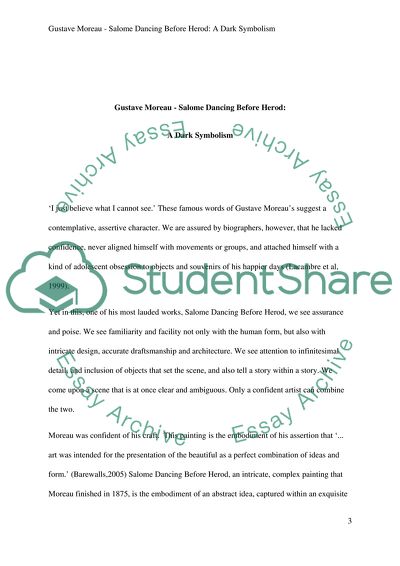Cite this document
(Salome Dancing Before Herod by Gustave Moreau Research Paper, n.d.)
Salome Dancing Before Herod by Gustave Moreau Research Paper. Retrieved from https://studentshare.org/culture/1730764-gustave-moreau-salome-dancing-before-herod
Salome Dancing Before Herod by Gustave Moreau Research Paper. Retrieved from https://studentshare.org/culture/1730764-gustave-moreau-salome-dancing-before-herod
(Salome Dancing Before Herod by Gustave Moreau Research Paper)
Salome Dancing Before Herod by Gustave Moreau Research Paper. https://studentshare.org/culture/1730764-gustave-moreau-salome-dancing-before-herod.
Salome Dancing Before Herod by Gustave Moreau Research Paper. https://studentshare.org/culture/1730764-gustave-moreau-salome-dancing-before-herod.
“Salome Dancing Before Herod by Gustave Moreau Research Paper”, n.d. https://studentshare.org/culture/1730764-gustave-moreau-salome-dancing-before-herod.


